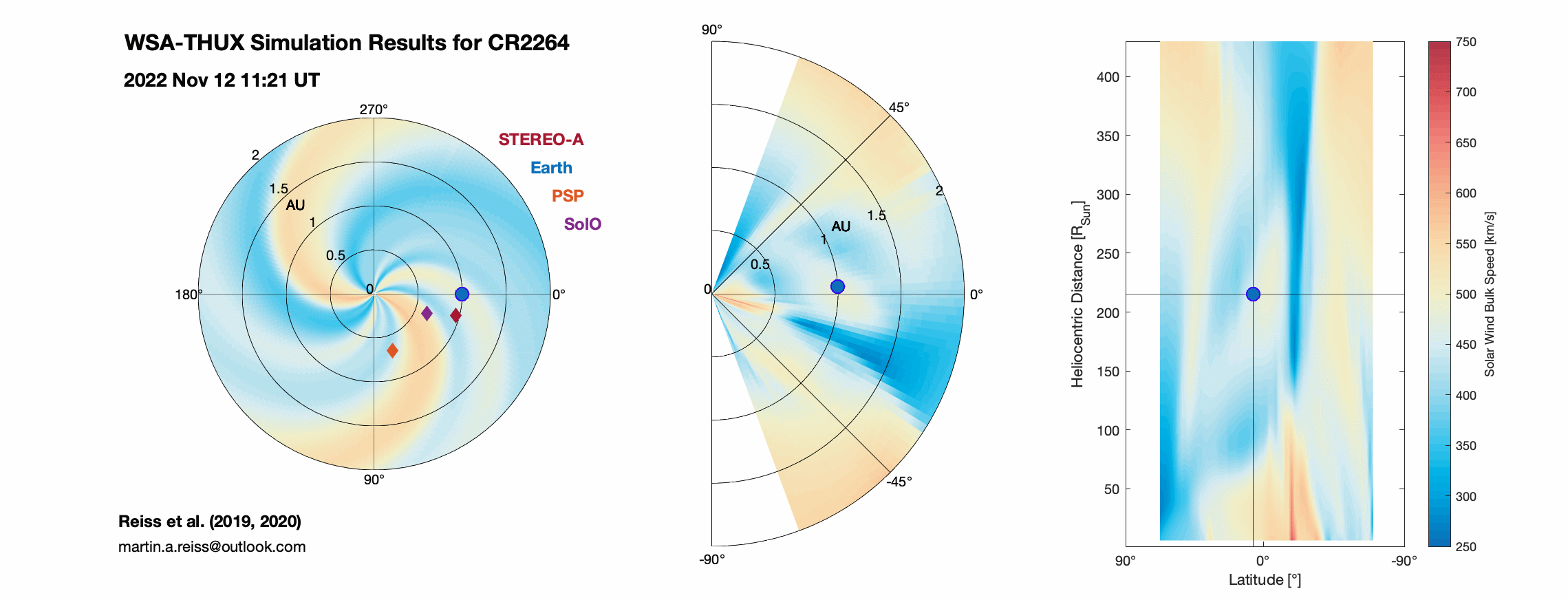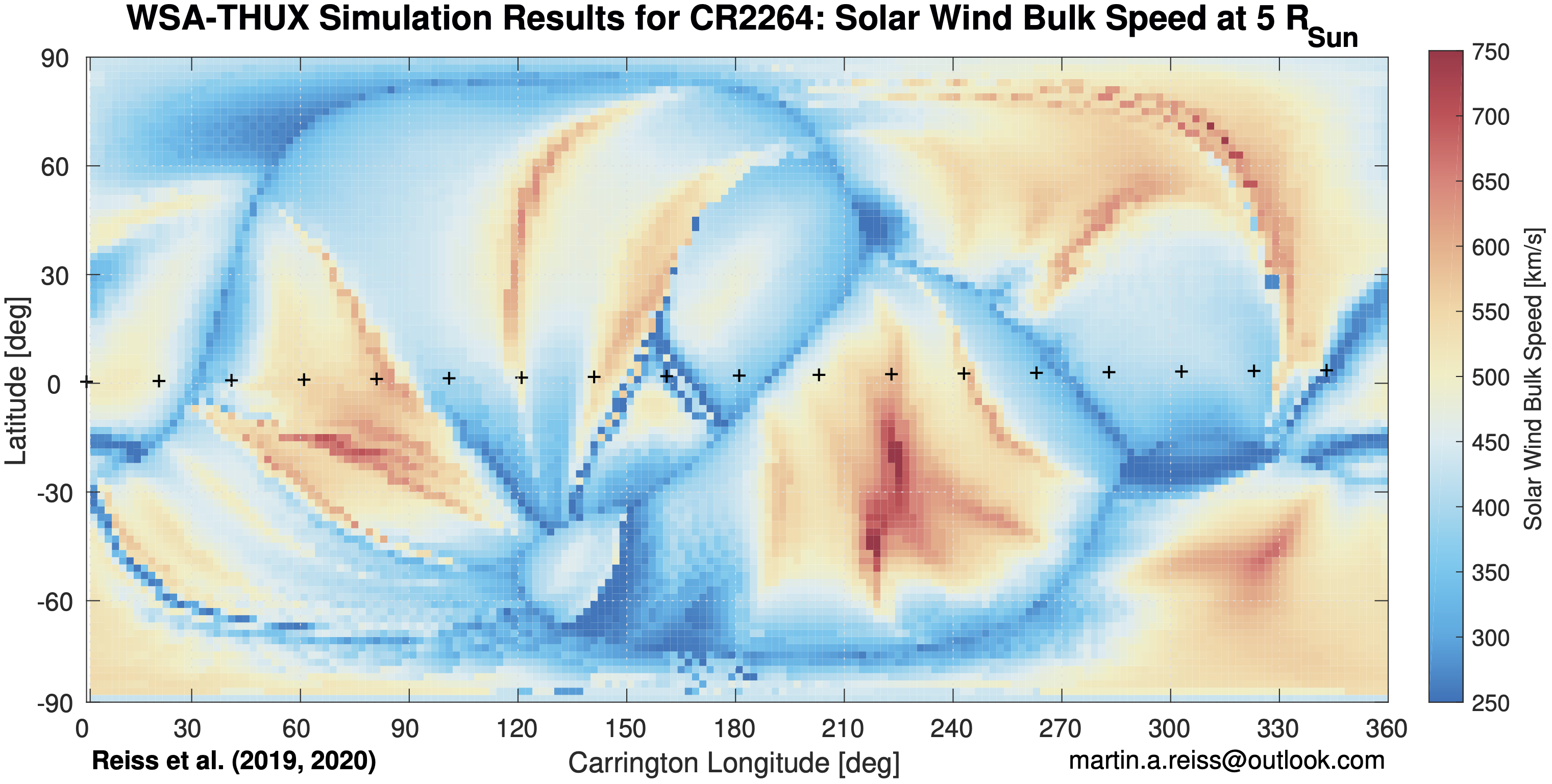Improving Ambient Solar Wind Modeling and Prediction
The solar wind is a stream of charged particles that constantly emanates from the Sun into our solar system, reaching speeds of up to 800 km/s. The interaction of the solar wind with Earth's magnetosphere continually leads to increased geomagnetic activity. In addition to the beautiful northern lights, geomagnetic storms can have severe consequences for our modern civilization. Technological infrastructure on the surface and in orbit such as power grids, air traffic, GPS, and radio communication are affected. Knowledge of the structure of the solar wind is therefore critical for successful space research.
In this project, we will study the question of how we can accurately model the large-scale structure of the solar wind in our solar system. Here we will develop new approaches to improve the boundary conditions of state-of-the-art solar wind codes. To validate and quantify our progress, we will focus on the comparison of model solutions with solar wind measurements from current space missions such as BepiColombo and Solar Orbiter. This project will provide a better understanding of the sources of the solar wind flow, give insight into the physical condition of the solar wind in our solar system, and improve the boundary conditions of large-scale solar wind models.

Figure 1: In Reiss+ [2019] and Reiss+ [2020] we have developed a framework that combines various reduced physics-based models to predict space weather conditions at Earth. This figure shows the solution of the WSA-THUX model combination for modeling the solar wind speed in the inner heliosphere. The framework is based on the established Wang-Sheeley-Arge Model [Wang & Sheeley, 1990; Riley+ 2001; Arge+ 2003], and a modified version of the Heliospheric Upwind eXtrapolation (HUX) model [Riley & Lionello, 2011] that bridges the gap between ballistic mapping and MHD modeling.
In this project, we will study the question of how we can accurately model the large-scale structure of the solar wind in our solar system. Here we will develop new approaches to improve the boundary conditions of state-of-the-art solar wind codes. To validate and quantify our progress, we will focus on the comparison of model solutions with solar wind measurements from current space missions such as BepiColombo and Solar Orbiter. This project will provide a better understanding of the sources of the solar wind flow, give insight into the physical condition of the solar wind in our solar system, and improve the boundary conditions of large-scale solar wind models.


Team
PI: Martin A. Reiss
Postdoc: Satabdwa Majumdar
Duration: 2022 April 1 – 2027 March 31
Link to FWF project page: P 34437

Acknowledgements: “This research was funded in whole or in part by the Austrian Science Fund (FWF) [10.55776/P34437]. For open access purposes, the author has applied a CC BY public copyright license to any author-accepted manuscript version arising from this submission."